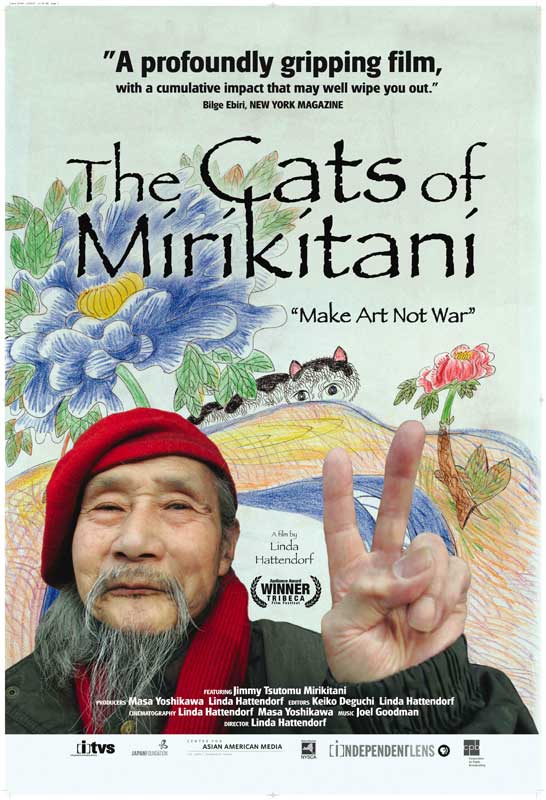From the Chicago Reader (March 9, 2007). — J.R.

BAMAKO ****
DIRECTED AND WRITTEN BY ABDERRAHMANE SISSAKO | WITH AISSA MAIGA, TIECOURA TRAORE, HELENE DIARRA, ROLAND RAPPAPORT, AMINATA DRAMANE TRAORE, DANNY GLOVER, AND ELIA SULEIMAN

Before the main title of Abderrahmane Sissako’s startling new feature appears, an elderly farmer arrives at a hearing that’s being held in a shared backyard in a poor section of Bamako, the capital of Mali. He’s there to testify, but when he steps up to the microphone he’s told politely to remove his hat and wait his turn.
What’s on trial in this backyard court is globalization, particularly the high-interest loans of such organizations as the World Bank and the International Monetary Fund and the pressure they put on governments to cut costs by privatizing or ending social services and firing workers. Unlike the seemingly random everyday details that surround the mock trial — small talk, the performances of a pop singer in a club, the illness of the singer’s daughter, a wedding, clothes being dyed or hung out to dry — this public reckoning is obviously staged. A year before he began filming, Sissako hired the judge, prosecutors, and defense attorneys, real lawyers who wrote their own dialogue, mainly in French (we’re often reminded that Mali is a former colony of France). Read more
From the April 6, 2007 issue of the Chicago Reader. — J.R.


THE HOAX * DIRECTED BY LASSE HALLSTROM
WRITTEN BY WILLIAM WHEELER, FROM A BOOK BY CLIFFORD IRVING WITH RICHARD GERE, ALFRED MOLINA, HOPE DAVIS, MARCIA GAY HARDEN, STANLEY TUCCI, AND JULIE DELPY
THE CATS OF MIRIKITANI*** DIRECTED BY LINDA HATTENDORF
There are ways both official and unofficial to describe “the movies.” There’s the new releases the industry decides to push in the malls, and then there’s everything else, which we’re obliged to root out for ourselves. A schoolteacher I know in the wilds of Argentina selects and projects DVDs on a regular basis, and some of the stuff he shows — old experimental shorts, recent features by Abbas Kiarostami, Alexander Sokurov, and Gus Van Sant — is pretty specialized. But he must know his audience at least as well as any studio, because his screenings draw about 800 people a week.
I’d like to think that kind of niche viewing is the wave of the future, something that will put a lot of mall fare to shame. And applying this notion to a couple of features opening this week, I’d like to think that a quietly precious piece of artfully arranged storytelling like The Cats of Mirikitani and a brassy piece of bluster like The Hoax represent respectively the future and present of movies. Read more
From the Chicago Reader (August 31, 2007). — J.R.

INDIA MATRI BHUMI ****
DIRECTED BY ROBERTO ROSSELLINI
WRITTEN BY ROSSELLINI, SONALI SENROY DAS GUPTA, FEREYDOUN HOVEYDA, AND JEAN L’HOTE
WITH A NONPROFESSIONAL, UNCREDITED CAST
From the beginning film has owed part of its fascination to its ambiguous marriage of documentary and fiction. Just after the war Roberto Rossellini came to prominence as a filmmaker through combinations of this kind. His best-known early works, Open City (1945) and Paisan (1946), are associated with the style popularly known as Italian neorealism, but through the 50s Rossellini experimented with increasingly adventurous mixes of reality and invention, culminating in 1959 with India Matri Bhumi, whose title means “India, Mother Earth.” It’s a sublime symbiosis of fable and nonfiction that poetically inter-relates humans and animals, city and village, society and nature.
At war’s end Rossellini was primarily concerned with the human devastation in Italy and Germany. But once he began working with Ingrid Bergman, with whom he was living after their affair busted up both their marriages, domestic issues started coming to the fore, particularly in such features as Europa 51, Voyage to Italy, and Fear. The Bergman films flopped both critically and commercially, though for the young critics of Cahiers du Cinema they were models of personal independent filmmaking that would help spark the French New Wave. Read more





